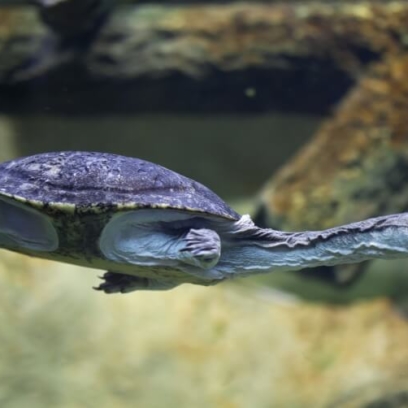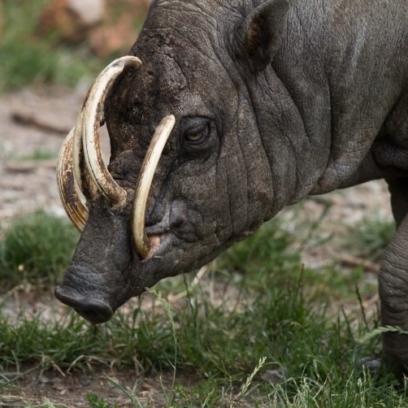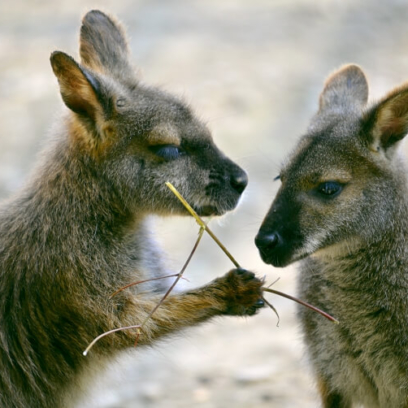White-Cheeked Gibbon
Hylobates leucogenysGeographic Region: rainforest canopy of southeast Asia, including Laos, Vietnam, and south China
Isn’t it Wild? On average, a gibbon’s front limbs are 1.5 times longer than their legs. If humans had the same proportions, a 5’4” tall person would have an arm span of over 10.5 feet!

There’s More to the Story Adult males are black and adult females are beige. Young gibbons change color according to their age. Infants are born beige and spend their 1st year with their mother. Around their first birthday they change to black coloring and spend most of their second year with the father. At sexual maturity females turn back to beige, and males remain black.
Details
Height: 1 – 2 ft.
Weight: 12 – 20 lbs.
fruit, leaves, small invertebrates, and insects
Endangered
World of Adaptations
Exhibit information
Come explore a World of Adaptations! Animals face numerous challenges in the natural world such as finding shelter and enough food, avoiding predators, and finding mates. However, they have developed adaptations that increase their chances of survival. Adaptations can be physical; the tail of the wallaby helps it balance and change direction as it hops. Adaptations can also be behavioral; gibbons vocalize in the morning to announce their presence to other animals in the area. They can also be a combination of things such as a Komodo dragon’s impressive teeth, sharp claws, and deadly venom. Come and explore a World of Adaptations and see and hear the adaptations of these fascinating creatures including Elsie, the only Komodo dragon at any zoo in New England.




